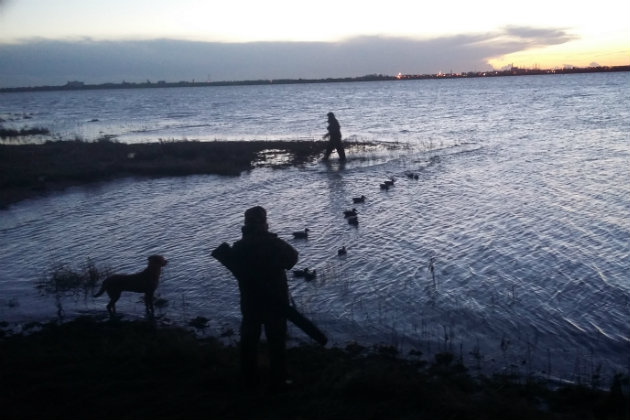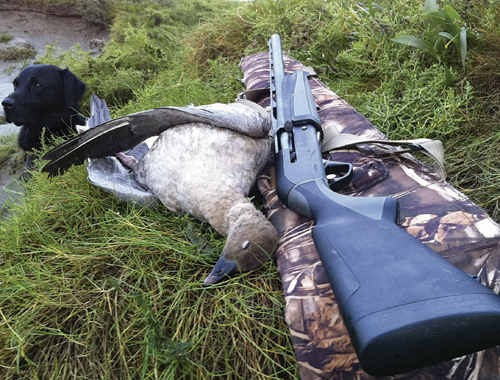How easy is it to join a wildfowling club?
Richard Negus investigates and wonders why some wildfowling clubs struggle to retain new members

Cold and wet mornings on the marsh are not for everyone
Joining a wildfowling club
My path to education came about thanks to the BASC wildfowling permit scheme, which provides a “suck it and see” opportunity for novices to try their hand at fowling. Luckily for me my local club, the Great Yarmouth Wildfowling & Conservation Association (GYWCA), is a keen participant of the scheme.
A phone call asking if I could have a go on the marsh led to my 4am wake up and a glorious morning on the East Anglian fowling Mecca that is Breydon Water under the knowledgeable eye of long-standing club committee member Terry.

Richard Negus, ready for his first day at wildfowling school
My introduction to wildfowling comprised nothing more than watching wigeon flighting at near-supersonic speeds miles out of range, retreating hastily inland to the safety of the seawall as a record high tide arrived an hour earlier than expected, and finally witnessing the watery rising sun accompany 500 or so pink-footed geese as they streamed on to the stubbles to feed.
I was utterly hooked
Not one shot did I fire — yet I was utterly hooked and absolutely smitten. The next day I posted my completed club membership application form and a few months later — following an interview in the Great Yarmouth Football Club club house — I was enrolled and on probation.
Have I been singularly fortunate in the ease with which I have forged a path to the foreshore? Are the rumours true that in some quarters “newbies” encounter something akin to a muddy masonic lodge?
Wildfowling for beginners
An essential guide to getting started in this challenging sport
11 of our favourite semi-automatics for wildfowling
Lincoln Premier Wildfowling Gun As the name suggests, this fits the bill for a gun that’s dedicated to wildfowling –…
Waiting lists?
To get the answer to this and many other questions I contacted BASC’s wildfowling officer Mark Greenhough for his views. Mark was quick to emphasise that I am indeed fortunate to live in wild and sparsely populated East Anglia. Some novice fowlers who live in larger conurbations encounter clubs whose membership number many hundreds. This makes places for aspirants less readily available and waiting lists can abound.

Richard Negus’s introduction to fowling was watching widgeon
In some other clubs, prospective members are required to undertake rigorous tests on wildfowl identification from photographic images or practical gun safety testing.
Major issue facing wildfowling
However, the major issue facing wildfowling, it seems, is not the difficulty in newbies finding and joining a wildfowling club but the clubs retaining their new members. Mark’s research revealed that for every new member joining a club another one leaves. The leavers tend to be those who have been members for less than three years.
Why do they leave? Perhaps the reality of a wild, wet, muddy marsh with birds flying miles away from your location doesn’t match the expectations raised by the books of BB, Eric Begbie and James Wentworth Day? Is it that new members find their loved ones get fed up with early mornings and ooze-covered clothes littering the house? Are the new kids ignored by the big boys?

Pink footed geese coming into feed
Rentention and engagement
I suspect the answer may be more mundane. Retention and engagement happens when wildfowling clubs foster a mentoring ethos towards those of us who are new to the sport; equally the wildfowling student must get involved, ask questions and become part of the team.
My involvement with the GYWCA has consisted of one day out and a meeting in a bar, yet I feel a welcomed part of a brotherhood. I text questions to my mentors and receive patient and full answers to queries on such matters as: “Will that bull that guards the path to the marsh at Burgh St Peter kill me?” or “My mallard feeding call sounds like flatulence — is this normal?” and so on.










